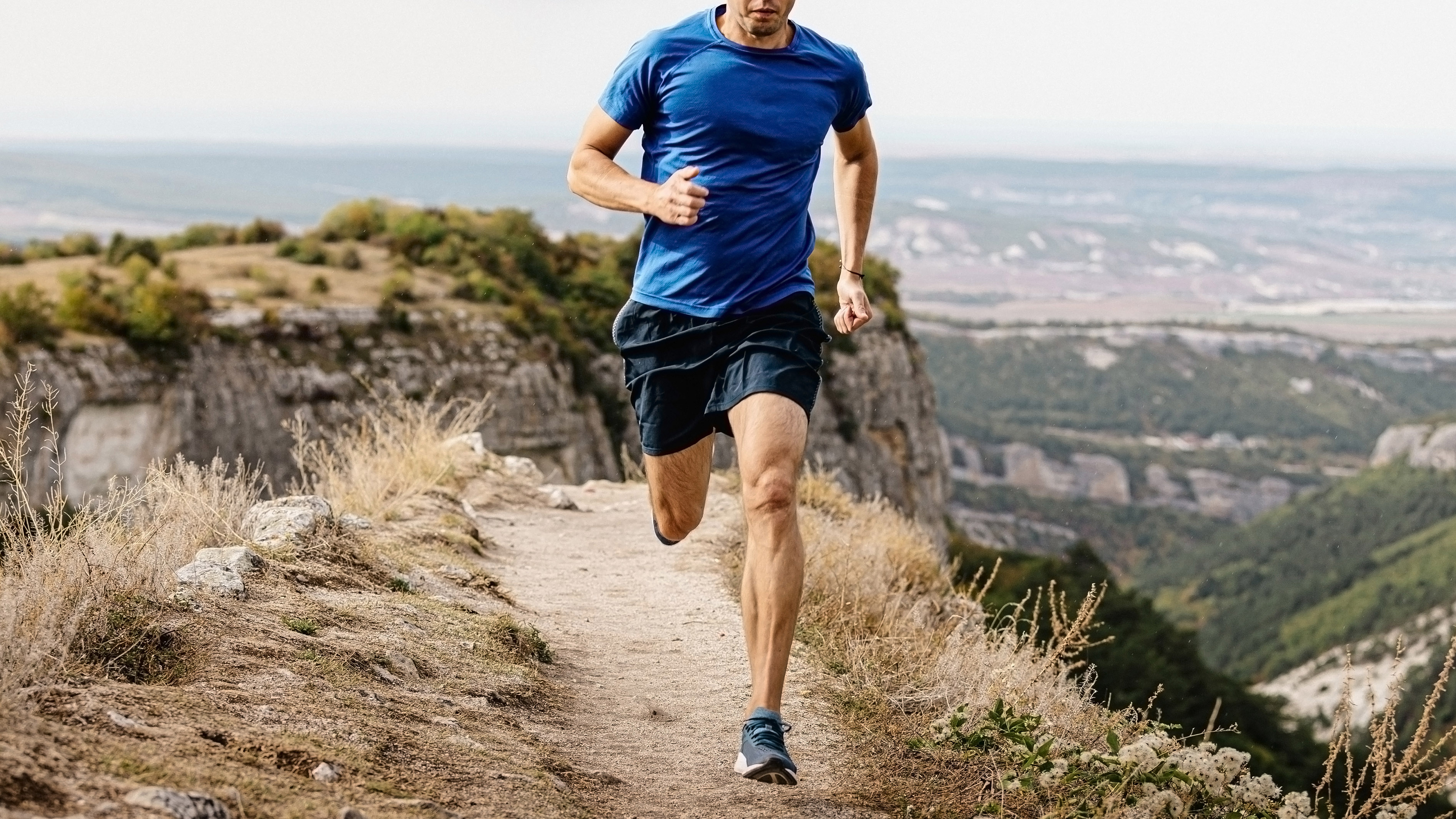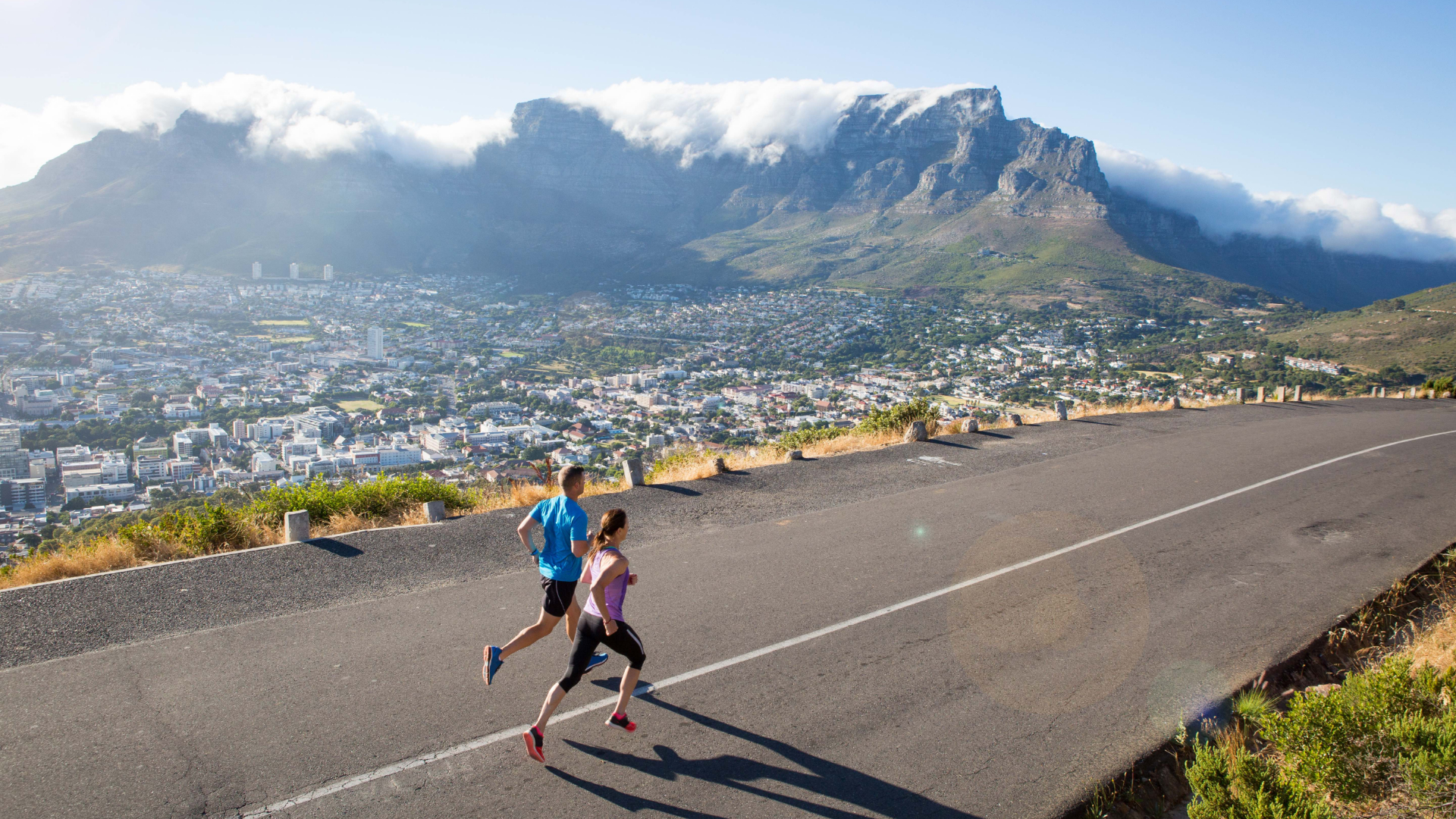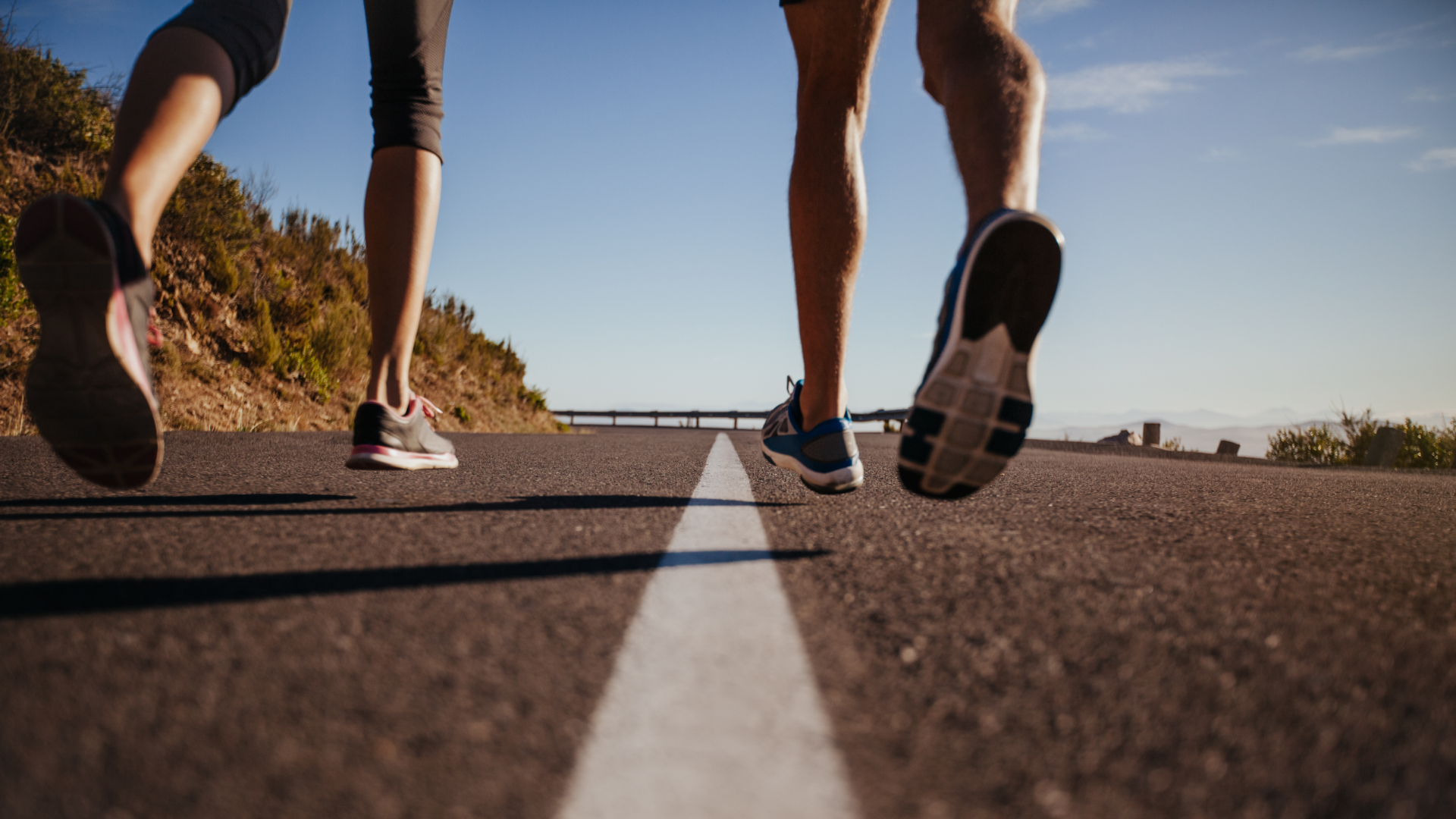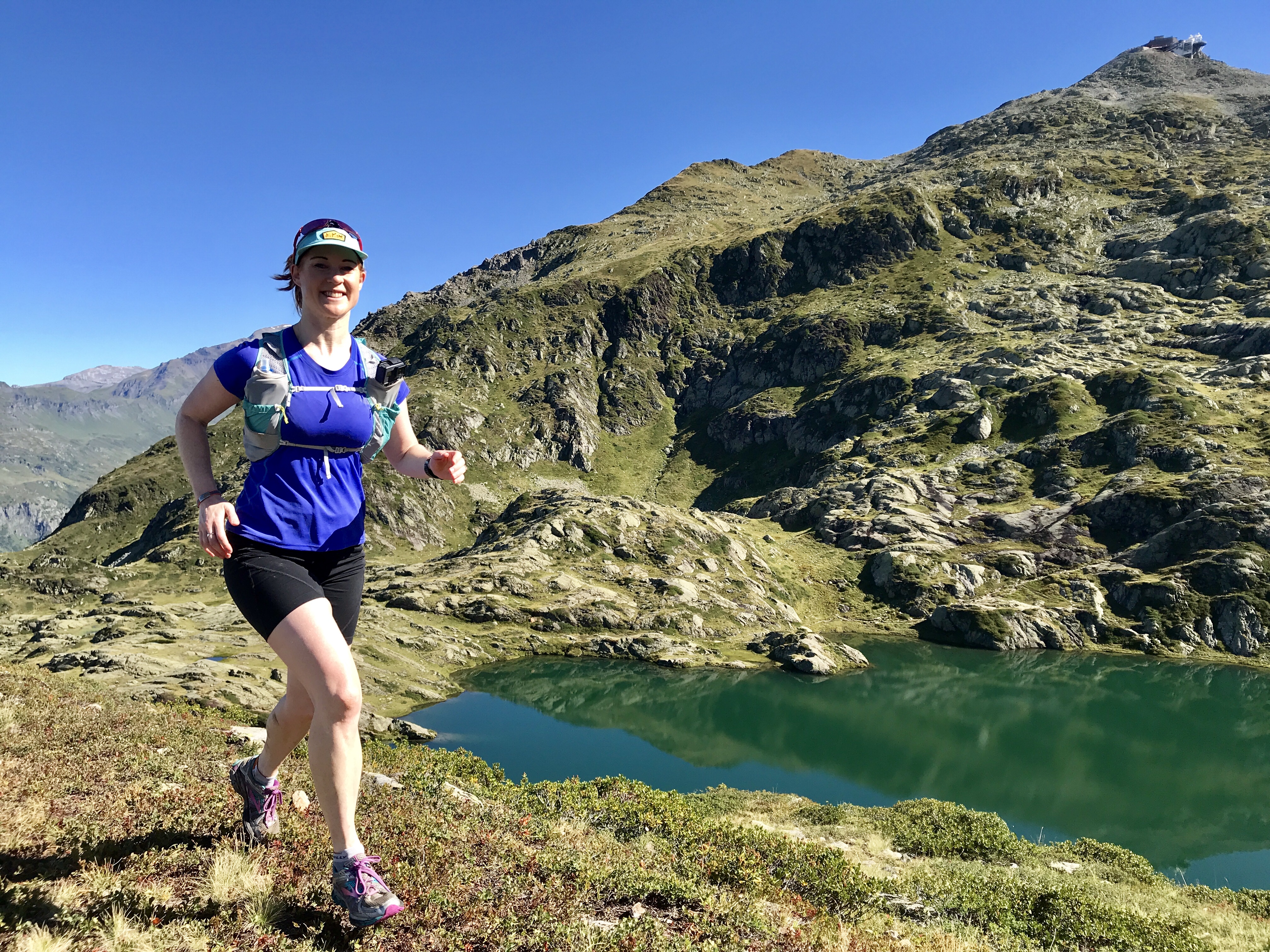Trail running vs road running: how these two popular pursuits compare
The battle of trail running vs road running has raged for years. Whether you enjoy sealed surfaces or wild trails, we consider the ups and downs of both pursuits...

Here, we consider the age-old debate that is trail running vs road running, considering the pros and cons of both and delivering our impartial verdict. From the gear you need and the terrain you’ll be pounding to the impact the pursuit has on your body and the inherent safety concerns, we leave no stone unturned.
One of the main attractions to running, in all its forms, is the feeling of freedom it gives you. Whether you’re exploring the city’s backstreets or racing along a sinuous ridgeline, it doesn’t really matter what’s below your feet, as long as you’re getting that exhilarating sense of liberation. So to consider the debate of trail running vs road running might seem like splitting hairs. Running is running. And running is amazing.

Yet, for those new to the sport, curious about the benefits and barriers to each pursuit, it’s certainly an important distinction. Before you purchase a pair of the best trail running shoes, you’ll want to know what you’re in for, how the approach differs to more traditional road running.
If you’re someone hell-bent on statistical analysis of your performance and personal bests, the consistent nature of road running might be the better option. One 10k is very similar to the next right? Whereas in trail running the variety of gradient, weather and terrain makes comparisons severely flawed. One day you might set out for a long adventure with a hydration pack, the next day you may head out for a shorter jog with no pack at all. It’s all about the experience. So, let’s dig into the pros and cons...
Trail running vs road running: the pros of road running

When it comes to trail running vs road running in terms of accessibility, road running is king. Road running on pavements around your local area is the simplest form of running, and it’s accessible to absolutely anyone with a pair of functioning legs and some sports shoes to put on the end of them.
It’s so convenient; you can run from the door of your house without having to particularly plan a route. Street lighting in many urban areas saves you from having to use your best headlamp, and the shelter from buildings and close proximity to help if needed means you don’t have to carry as much gear to keep yourself safe.
It’s a much lower maintenance sport, as shoes don’t come into contact with anywhere near as much mud, and you’re unlikely to tear your base layer on aggressive flora.
All the latest inspiration, tips and guides to help you plan your next Advnture!
Many people run commute to work along roads, which is a fantastic, timesaving way to keep fit, boost your mileage and be more eco-friendly. The same can be said for running errands to the local shops. You can plug in a pair of the best running headphones, pop on your favourite beats and really escape for half an hour.
There are also many more road running clubs than trail running clubs, so you’re more likely to find like-minded local friends this way. There may well be quite a few who also run trails, so you might get the best of both worlds from joining an urban road-running club.
Trail running vs road running: the cons of road running

In some areas you do have to brave the odd pavement-less section if you live in a more rural area. Hence, road running can be more dangerous due to traffic, so you might need more reflective gear, such as a reflective running jacket, to protect yourself, and a headlamp with a red rear light.
It completely depends where you live, but in urban areas there can also be issues for people running safely on their own – especially women and especially at night – so you might be more constrained as to when you feel safe to run, if you have to wait for others to be free at the same time.
The repetitive pounding on hard sealed surfaces can lead to more repetitive strain and impact-related injuries if you don’t let your body recover properly. And the vehicle pollution you breathe in, while running in heavily congested areas, is less than healthy for your lungs.
There’s also more of a competitive, timed aspect to road running so you can get some real PB (Personal Best) bores who will only talk to you about their splits and pace. That’s fine if you’re also keen to push yourself to the max, but it’s good to keep things in perspective and not put too much pressure on yourself if you’re just running for fun.
Trail running vs road running: the pros of trail running

What tips the battle of trail running vs road running towards trail running is the sense of adventure. Trail running bridges the gap between road running and skilful mountain and fell running over often pathless and technical terrain. Trails (paths, tracks, bridleways) can be found easily in and around most urban areas, through local parks and woodland, around fields and along coastlines, canals and rivers. It’s a great deal more exciting than road running and demands a bit more exploration, which anyone with a zest for adventure will enjoy.
With underfoot conditions being more technical (rocks and roots across the path, muddy and boggy sections of track and so on), and the likelihood of encountering hills being higher, many trail runners are not too bothered about their pace when out training. Slavery to the best GPS watches and Strava sections can still happen, but for most, it’s a case of speed-hiking the uphills and enjoying a trot over the flats and downhills, taking in the views and appreciating the wildlife.
If you like to run without crowds and vehicles, traffic-free trail running truly is a wonderful option. There are no cars, only cows, and you’re far less likely to have to fight your way through streets crammed with pedestrians, stop at traffic lights and breathe in vehicle exhaust fumes. The air is fresh and you’ll feel free.
Talking of freedom, being outside in green spaces and beside water has been scientifically proven over and over again to decrease stress, anxiety and leave you feeling refreshed and re-energized. Concentrating hard on a rocky, muddy, twisting trail will definitely take your mind off work. The level of engagement with your green surrounds you get from trail running is really restorative, and you’re much more likely to encounter wildlife. Many trail runners are moving to barefoot running shoes, which give their feet more 'trail feel', the sensation of properly feeling the ground beneath your feet.
Trails are also kinder to your muscles and joints, as every step is different and the ground is usually softer and more forgiving, so you avoid the repetitive strain and impact injuries of road running. This also makes trail running more of a whole-body workout than its road equivalent, burning more calories, so you can eat more cake...
If you’re the kind of person who likes to learn new skills, trail running also offers you the opportunity to learn how to plan a route on trails local and further afield, and how to navigate yourself around routes successfully. Trail running is a great excuse to travel to new hills and mountains all over your own country and throughout the world. It opens up a whole new world of opportunities.
Trail running vs road running: the cons of trail running

It’s harder! This might actually be a plus-side for some, but if you’re not a fan of hills, mud and rocky, uneven ground underfoot, you might not appreciate having to slow down to run safely, nor love the effort this full-body workout demands as your body tries harder to keep balanced and stable over the lumpier terrain. It’s mentally more exhausting too, as you need to think about foot placement to avoid tripping or rolling an ankle. Oh, and both of those hazards are ever-present. But at least you’re unlikely to get hit by a truck.
There won’t be any street lighting on the trails, so in the months with shorter days you might have to invest your hard-earned cash in a good running headlamp with 200 lumens brightness or more, to light up your way in the dark. Your routes might also take you over more exposed ground, where more gear – like a waterproof jacket, first aid kit and a small running backpack to carry it all – will be required. Some might not see this as a downside though – being self-sufficient has an appeal to many more adventurous runners. It's likely to be colder too, so items like running leggings and gloves are common items in a trail runner's arsenal.
Livestock can be an issue for some trail runners too – it’s always advisable to slow to a walk and not get in between cows and their calves. Some people find this scarier than others, and with good reason – people do get trampled. But don’t let this put you off, it’s very rare and you can usually avoid fields of cows, or slow to a walk so as not to alarm them.
You can find trails locally, but if you don’t live in a particularly picturesque area or are surrounded by monotonous, energy-sapping muddy field paths, trail running might be less appealing. You might have to drive to find a nice place to run off-road which takes more time and planning, and rather defeats the object.
You are much more likely to get muddy on trails too, so while for some this is all part of the appeal, others will not relish cold, wet feet and legs, nor the resulting brown swirl in their washing machine if you don’t hose yourself down from a good mud-caking before you strip off.
| Header Cell - Column 0 | Road running | Trail running |
|---|---|---|
| Convenience | Very convenient, no travel required | May require travel |
| Safety concerns | Traffic concerns | Uneven ground, livestock |
| Gear | Standard running gear | Trail running shoes, hydration pack, headlamp |
| Terrain | Tarmac, generally flat | Varied terrain, hills, mud, rocks |
| Impact | Higher impact on your joints | Easier on your joints |
Trail running vs road running: the verdict
Whether you choose to run on or off road, it’s all a matter of personal preference. If you’re an adventurous type, you will very likely love trail running, especially if you come from a hiking background, as it’s essentially hiking sped up a bit.
However, if you like to stay clean, uneven terrain irritates you and you like to just bob out easily from your house on a straightforward route without too much gear faff, road running sounds like your bag.
You might find you like both, depending on time available, your mood, the season and the people you are running with. But whichever type of run you choose, remember that the most important thing is ENJOY IT!
The co-founder and former editor of Trail Running magazine, Claire now runs the YouTube channel Wild Ginger Running, creating films about trail- and ultra-running advice, inspiration, races and gear reviews. An award-winning journalist, writing for outdoor and adventure sports magazines and websites, Claire's first book, The Ultimate Trail Running Handbook (5k to 50k), is out now. Her second, The Ultimate Ultra Running Handbook (50k to 100 miles), is out Autumn 2024. Claire also speaks and presents at events and races.

